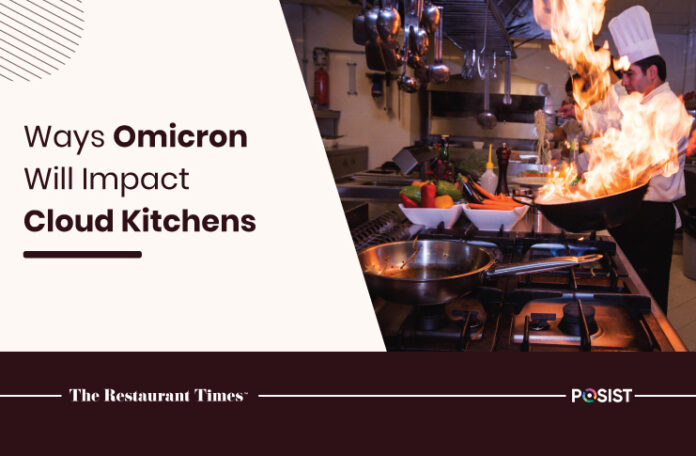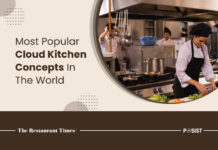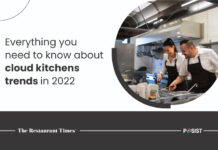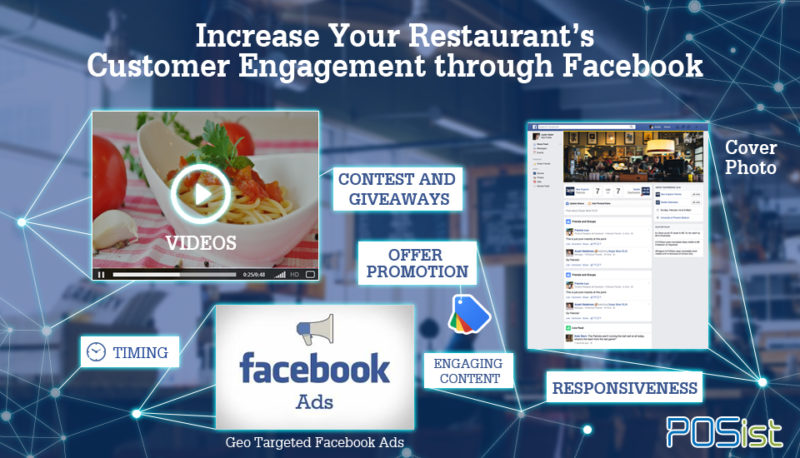Many restaurants perceive cloud kitchens as competition, but cloud kitchens will take market share from grocery chains rather than local bistros. On any given day in the United States, 6% of the population will order takeout for one or more meals. Many of us can attest to the fact that the frequency of our take-out and delivery orders has increased as a result of the pandemic. In a post-pandemic society, consumer behaviours will continue to shift, and restaurant delivery is predicted to expand.
Year over year, restaurant delivery sales increased by 46% in 2019. The average annual increase in delivery sales has been over 20% in recent years. The proliferation of meal delivery apps, together with a steady influx of new competitors all vying for a piece of the pie, is driving this surge.
1. Less Expensive Kitchens
QSRs are partnering with cloud kitchen suppliers to scale up cost-effectively. In most cases, cloud kitchen companies supply the basic infrastructure required for preparing food and packaging it for delivery with the QSR doing the rest. Momo King, for example, has teamed with Smart Kitchen Company to run 11 kitchens in the Delhi-NCR area. While a QSR outlet requires an investment of Rs 12-15 lakh, a cloud kitchen can be created with only 40% of that amount, according to Shyam Thakur, founder of Momo King. The startup intends to expand its cloud kitchen model to Chandigarh and Dehradun, as well as to build a branded delivery app. Its kitchens in Delhi-NCR, which are no more than 150-200 square feet in size, already serve 60-70 orders per day. Mad Over Donuts has gone down a similar path, partnering with Bengaluru’s Loyal Hospitality and New Delhi’s Rebel Foods to create cloud kitchens.
2. Zamrudpur Can Expand
Due to the frequent closure of dine-in restaurants in Delhi due to pandemic restrictions in the last two years, cloud kitchens – delivery-only restaurants – have sprung up all over the city. Zamrudpur, a south Delhi village with roughly 100 cloud kitchens, is at the epicentre of this change. On motorbikes, cycles, and electric bikes, food aggregators’ delivery partners speed in and out of the community throughout the day. The majority of cloud kitchens here don’t have a signboard; the only indication of their presence is delivery workers taking orders through a small opening in the building’s doors.
The village is a favourite with cloud kitchen businesses, according to Ashwani Basantani, who runs Cloud Kitchen Exchange, an online platform that helps buy, sell, and rent cloud kitchens. Why? The village is popular with cloud kitchen businesses because of low rentals, a South Delhi address, and its proximity to posh South Delhi colonies, which generate the majority of the high-value orders. On average, the Zamrudpur kitchen delivers roughly 50 deliveries each day to nearby neighbourhoods, including sushi, dimsums, and bao, among other Pan Asian cuisines.

3. A Hybrid Model
Despite the fact that restaurant revenues are recovering faster than projected, online delivery remains a substantial income stream for operators. Restaurants are always seeking ways to reduce their operating costs, such as power, supplies, leases, and labour costs. A hybrid business model for fine-dining restaurants can be an innovative business strategy to consider. The hybrid approach blends the best of dine-in, delivery, and takeout into one convenient package. The emergence of the fast-casual category is a good example of this technique; they combine speed and convenience with the experience of dine-in and controlled delivery to offer quick service with a casual atmosphere. Cloud Kitchens combine the flexibility of a food truck with increased efficiency and data-driven decision-making. Both models were so successful that the brick and mortar businesses had to completely revamp their operations. This strategy can work well since the digital and physical infrastructure is in place.
4. Real Estate Efficiencies
In comparison to the typical restaurant concept, ghost kitchens provide various benefits to both restaurateurs and landlords. Below is a comparison of two possible scenarios for the same 2,000 square foot facility footprint: regular dine-in restaurant and cloud kitchen. In terms of start-up costs and operational expenses such as location, logistics, staffing, and licenses, ghost kitchens and typical dine-in venues have different business strategies. Location and visibility are crucial for dine-in businesses. These enterprises require easy access to the general public or must be situated along major traffic arteries, which drives up land and property costs. On the other hand, the location of cloud kitchens is determined by access to logistics and raw materials rather than visibility from major highways. Cloud kitchens, like last-mile facilities, follow rooftops because they must be within a delivery radius of customers.
Along with outstanding packaging and food, technology is critical to the success of a cloud kitchen. A bigger investment in modern restaurant technology is required to run a last-mile delivery firm. It can drive cost savings and higher efficiency across the board for cloud kitchens. While Omicron will almost certainly not be the final version of the COVID-19 virus, it may be the final variant to be concerned about. SARS-CoV-2 will most likely become an endemic virus that slowly mutates over time if we’re lucky, and the course of this pandemic is difficult to predict. Restaurant technology can help businesses make the most of the emerging challenges and opportunities in this scenario.

















